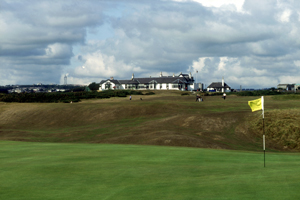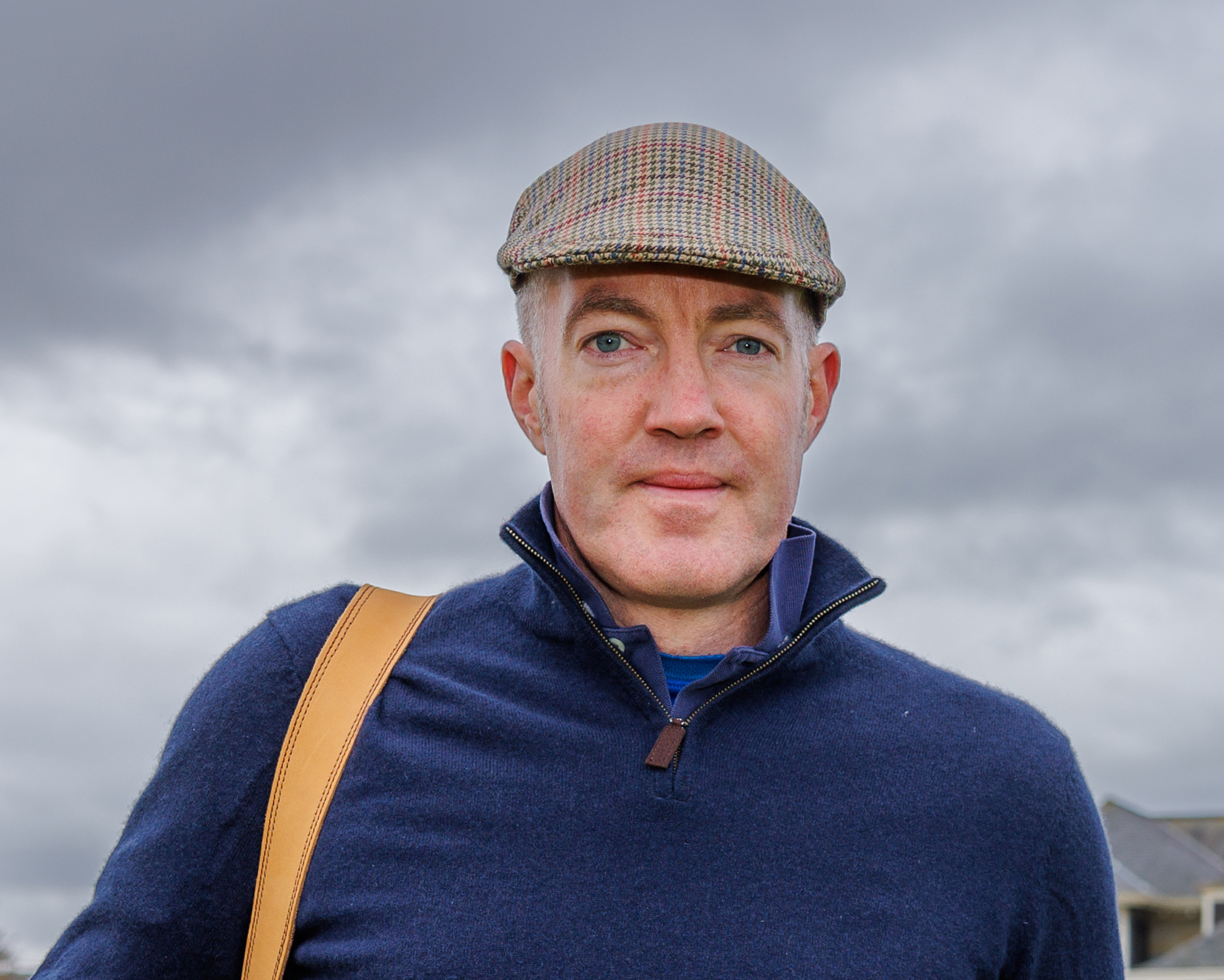Scotland - Aberdeen
Scotland's North East provides an embarrassment of riches


The early 1970s heralded a new era for the city of Aberdeen. The discovery of huge gas and oil reserves under the North Sea led to the transformation of the "Granite City" from fishing port to Europe's offshore oil capital. An influx of oil companies meant increased wealth and diversity in Aberdeenshire. Today certain postcodes in Aberdeen are home to more millionaires than those in the richest parts of London. The city's wealth must have been an attraction for American business tycoon Donald Trump who has plans afoot to build a golf resort just to the north of the city.
Golf is very much part of the culture in the North East of Scotland. Membership fees are low and the sport is enjoyed by people of all backgrounds. There's a multitude of excellent courses in the area but it's the links that make this region famous.
Royal Aberdeen played host to the 2005 Senior British Open. The event gave golf fans a glimpse of one of Scotland's greatest courses. Although it doesn't carry the prestige of the country's Open venues, the quality of holes, on the front nine in particular, rivals anything else on Britain's coast.
When the wind gets up there are few layouts that provide such an exacting examination of accuracy and stamina. Featuring gorse and deep rough, tight fairways and superb greens, Royal Aberdeen delivers classic and unforgettable links golf. Beware when you reach the far end of the layout as Murcar Golf Club is immediately adjacent. Legend has it a group of Japanese tourists once failed to turn for home and forged out down the second half of Murcar's front nine. It was several holes before they were informed of their error.
Twenty-five minutes' drive north of Royal Aberdeen is the small town of Cruden Bay. Following the expansion of the railways in the 19th century, a golf course and magnificent pink granite hotel were built here. The new golf resort was nicknamed "The Brighton of the North".
Sadly the hotel began to struggle in the 1930s and was demolished after the Second World War. Fortunately the same fate did not befall the golf course which was bought by a group of businessmen in 1950 for the princely sum of £2,750.
Plateau greens, undulating fairways, blind shots, streams and gorse - Cruden Bay has it all. The layout is unique and an absolute joy to play.
Subscribe to the Golf Monthly newsletter to stay up to date with all the latest tour news, equipment news, reviews, head-to-heads and buyer’s guides from our team of experienced experts.
Visible from most parts of the course is the imposing ruin of Slains Castle. The building was supposedly an influence for Bram Stoker who holidayed in Cruden Bay when writing Dracula. The rest of the course's surroundings have less of the Gothic about them. In fact this is an extremely picturesque and peaceful location. Out among the dunes with the call of skylarks drifting on the breeze the real world seems very distant.
The North East is packed with history and it?s home to some of the country's most impressive architecture. Crathes, Cragievar and Fyvie castles are superb examples of the Scottish Tower House. Duff House near Banff is a beautiful mansion housing an impressive gallery, while Drum Castle's history stretches back to the Middle Ages.
The Cairngorm Mountains begin just an hour's drive west of Aberdeen, offering fantastic hill walking and mountain biking. If you're less energetic just stay in the car and enjoy the breathtaking scenery.
Lossiemouth or Moray Golf Club was the final stop on our trip. The course lies on the Moray Firth about an hour and a half's drive from Aberdeen. Designed by the legendary Tom Morris, the Old Course at Lossiemouth opened for play in 1889. This is another superb links, very tight and just as demanding as the two tackled previously. The bunkers here are to be avoided at all costs, particularly the one to the left of the 18th green. Right in front of the clubhouse windows it has a high, severe face. Three failed attempts and an eventual "hand-wedge" out left my face looking just as fierce.
If you're not distracted by the stunning coastal setting, Lossiemouth has another trick up its sleeve. There's an RAF landing strip just a 4-iron or so from the end of the course. The aerial display when I played was impressive, if a little off-putting.
The North East of Scotland is an excellent destination for a golf holiday. With wonderful countryside, amazing history, many fine courses and not too many people it's a unique area waiting to be explored.
CONTACTS BOOK
Where to play
Royal Aberdeen
T: 01224 826591
W: www.royalaberdeengolf.com
Stats: par 70, SSS 73, 6,850 yards
Cruden Bay
T: 01779 812285
W: www.crudenbaygolfclub.co.uk
Stats: par 70, SSS 72, 6,396 yards
Moray (old)
T: 01343 812018
W: www.moraygolf.co.uk
Stats: par 71, SSS 73, 6,578 yards
Where to stay
The Marcliffe at Pitfodels
T: 01224 861000
W: www.marcliffe.com
The Marcliffe is a sophisticated and stylish hotel just minutes from the centre of Aberdeen. The hotel has 37 bedrooms plus five suites. For the weary golfer, The Marcliffe also has its own health spa.
Banchory Lodge Hotel
T: 01330 822625
W: www.banchorylodge.co.uk
Set on the north bank of the River Dee, the Banchory Lodge offers a touch of Highland grandeur. Located 17 miles west of Aberdeen, it's convenient for the golf and for the mountains.
The Skerry Brae
T: 01343 812040
W: www.skerrybrae.co.uk
Overlooking Moray Golf Club, this is great for golfers. An inn-style hotel, it's an informal place to stay. Offering good pub grub and an excellent bar, it's a lively venue.
Off course
Crathes Castle
T: 01330 844525
Duff House
T: 01261 818181

Fergus is Golf Monthly's resident expert on the history of the game and has written extensively on that subject. He has also worked with Golf Monthly to produce a podcast series. Called 18 Majors: The Golf History Show it offers new and in-depth perspectives on some of the most important moments in golf's long history. You can find all the details about it here.
He is a golf obsessive and 1-handicapper. Growing up in the North East of Scotland, golf runs through his veins and his passion for the sport was bolstered during his time at St Andrews university studying history. He went on to earn a post graduate diploma from the London School of Journalism. Fergus has worked for Golf Monthly since 2004 and has written two books on the game; "Great Golf Debates" together with Jezz Ellwood of Golf Monthly and the history section of "The Ultimate Golf Book" together with Neil Tappin , also of Golf Monthly.
Fergus once shanked a ball from just over Granny Clark's Wynd on the 18th of the Old Course that struck the St Andrews Golf Club and rebounded into the Valley of Sin, from where he saved par. Who says there's no golfing god?